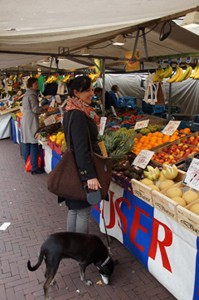How to Identify Fresh Fruit and Vegetables
Fruit and vegetables are unquestionably at their best when they’re fresh.
Identifying what’s fresh and what isn’t doesn’t need to be confusing. In today’s blog, we’ll be providing guidance on what signs signify freshness over ageing.

Fruits
Oranges: The freshness of an orange can be determined by lightly scratching the rind/skin and waiting to see if the fruit emits a pronounced citrus scent. In terms of touch, it should feel heavy for its size and firm. Skin should be a nice orange all the way around free of blemishes such as dark spots (typically a sign of bruising or rot).
Apples: Apples should feel heavy for its size and should be nice and firm. This signifies that the inside is moist and fairly solid, and hasn’t dried out. Also be sure to check the surface of the apple for any discolouration. Discolouration appears similar across different coloured apples and tends to resemble a bruise-like quality comparable to those found on many other fruits. Any discolouration or bruising means they could’ve been damaged during transit and are, by extension, damaged under the surface.
Mangoes: Any ripe mango you purchase should be a nice rich yellow in colour. As for feel, it should be firm and have the same heaviness for its size that apples and oranges possess. Also be sure to smell the mango for its subtle aroma. As long it smells like a flavoursome mango, that’s a sign it’s in good condition. Keep an eye out for discolouration and bruising.
Pears: Pears should have a warm skin colour and be free of blemishes and bruises. They should also feel heavy for their size and have a defined firmness.
Vegetables
Broccoli: The heads of broccoli ideally will look fresh and be notably compact. As for its stalk, it should appear juicy and healthy. In terms of colour, broccoli should only be differing shades of green, with head a dark green and the stalk a lighter green, with potentially a slight bit of white at the very base of the stalk. If the broccoli stalk is void of colour or the entire broccoli has taken on a yellow appearance, this means it’s not ripe and should be avoided.
Lettuce: Lettuce is fairly simple. It’s leaves should be fresh and it should feel nice and heavy in your hand. Lettuce suffering from withering leaves or brown discolouration are not fresh.
Corn: With corn, you want to make sure that the silk covering the cob looks fresh, moist and green. When removing the husk to reveal the corn kernels, they should look plump and juicy. Corn with browned silk and husks or an excessive number of non-plumb corn kernels should be avoided.
Onions: Identifying a good onion comes to a couple of very simple factors. The onions should be firm with shiny, thin skin. If your onions are any different to this, chances may be they’re not in the best condition.
General tips
Of course, there are far more fruits and vegetables beyond these, but we listed these to help give you some specific tips. However, in a general sense, there are some good signs of whether a fruit/vegetable is fresh or not.
First of all, for those fruits and vegetables that naturally emit a strong scent, you can easily smell these to see if the scent is right. As per the orange, you’re looking for a citrus smell. If the typical smell is compromised by some off-putting scent, then it’s likely the fruit could be off.
Every fruit and vegetable tends to have a defined colour associated with it when ripening and ripe. For example, when ripening, bananas are green and once ripe they’re yellow. If you look at a banana and its bruised or discoloured, it’s a safe assumption it’s not fresh. The same applies with almost all other fruits and vegetables. If it isn’t its usual colour and is suffering blemishes or bruises, don’t get it.
Finally, always look out for those aforementioned bruises and blemishes. If they’re there, it means the produce is aged or damaged.